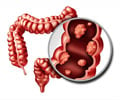A signaling pathway in cancer cells that controls their ability to invade nearby tissues in a finely orchestrated manner has been discovered by scientists.

"We've known for some time that invadopodia are driven by protein filaments called actin," said study leader Louis Hodgson, Ph.D., assistant professor of anatomy and structural biology at Einstein. "But exactly what was regulating the actin in invadopodia was not clear."
Previous studies had suggested that a protein called Rac1 played a role in cancer-cell invasion. When Rac1 levels are elevated, cancer cells display more invasive characteristics. But this suspected Rac1 activity in invadopodia had never been directly observed, only indirectly inferred.
To surmount this hurdle, Dr. Hodgson and his colleagues in the Gruss Lipper Biophotonics Center at Einstein devised a new fluorescent protein biosensor that, combined with live-cell imaging, revealed exactly when and where Rac1 is activated inside cancer cells.
Using this biosensor in highly invasive breast cancer cells taken from rodents and humans, the Einstein team discovered that when an individual invadopodium forms and is actively degrading the ECM, its Rac1 levels are low; on the other hand, elevated Rac1 levels coincide with the invadopodium's disappearance. "So high levels of Rac1 induce the disappearance of ECM-degrading invadopodia, while low levels allow them to stay—which is the complete opposite of what Rac1 was thought to be doing in invadopodia," said Dr. Hodgson.
To confirm this observation, the researchers used siRNAs (molecules that silence gene expression) to turn off the RAC1 gene, which synthesizes Rac1 protein. When the gene was silenced, ECM degradation increased. Conversely, when Rac1 activity was enhanced—using light to activate a form of the Rac1 protein—the invadopodia disappeared.
Advertisement
"Rac1 levels in invadopodia of invasive tumor cells appear to surge and ebb at precisely timed intervals in order to maximize the cells' invasive capabilities," said Dr. Hodgson.
Advertisement
"Rac1 inhibitors have been developed," Dr. Hodgson said, "but it wouldn't be safe to use them indiscriminately. Rac1 is an important molecule in healthy cells, including immune cells. So we'd need to find a way to shut off this signaling pathway specifically in cancer cells."
Source-Eurekalert















